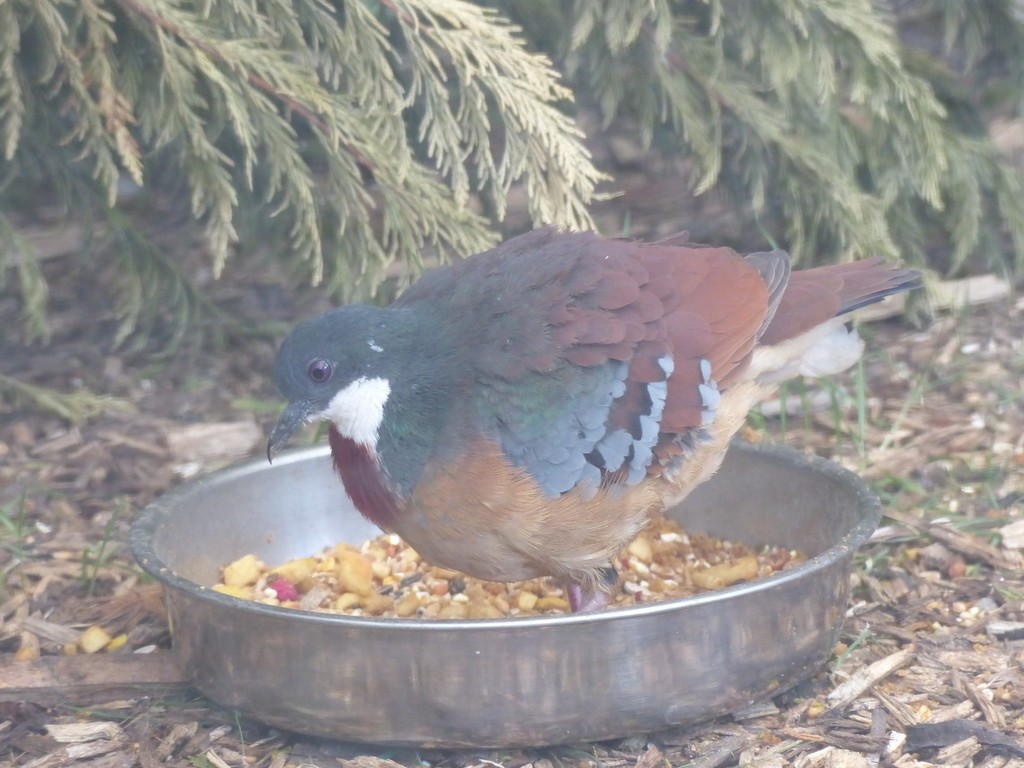Mindanao Bleeding-heart
A species of Bleeding-hearts and allies Scientific name : Gallicolumba crinigera Genus : Bleeding-hearts and allies
Mindanao Bleeding-heart, A species of Bleeding-hearts and allies
Botanical name: Gallicolumba crinigera
Genus: Bleeding-hearts and allies
Content
Description General Info
Description
The Mindanao bleeding-heart is about 29 cm in length and weighs 184–204 g. The forehead, crown, nape and mantle are metallic green, slightly duller on the forehead and sides of the head. The back to rump is a chocolate brown with fringes of green. The upper and central tail coverts are purplish brown, the chin and throat are white. Most striking is a blood red patch on the breast, hence the common name. The lower breast to the undertail is a rusty orange that is its darkest on the breast and flanks and palest on the belly. The underwing is chestnut brown and blackish on the edges. The wing shield is a dull brown with broad tips which make three distinct wing bars. The sexes are similar in appearance though there may be some dimorphism in iris colouration. Juveniles are dark chestnut or reddish brown with some metallic fringes on the mantle and scapular. 
Size
30 cm
Feeding Habits
The birds feed on the forest floor, foraging for berries, seeds, worms and insects. In captivity they are typically fed grains, greens and parakeet seed. 
General Info
Behavior
It is a shy bird which typically runs from danger, spending most of its time on the forest floor, and only flying short distances if flushed. It only perches in trees if frightened or when nesting or roosting. The call is a repeated woo-oo similar to that of most doves and pigeons. It is a rare sight because of its cryptic behaviour. 
Distribution Area
The Mindanao bleeding-heart exists (or used to exist) on the Philippine Islands of Samar, Leyte, Basilan, Mindanao, Bohol, and Dinagat. It is one of the three bleeding-heart doves that are native to their own particular island or islands of the Philippines. It naturally occurs in both primary and secondary tropical lowland rainforests up to an elevation of 750 m. 
Species Status
The main threats to the Mindanao bleeding-heart are deforestation and overhunting for food and for the pet trade. The status of the species is not sufficiently known for a definite assessment. Initially listed as being of least concern in 1988, it was subsequently uplisted to vulnerable in 1994, and further to endangered in 2000. With its exact rate of decline still unresolved, it was downlisted to vulnerable in the 2007 IUCN Red List. 
